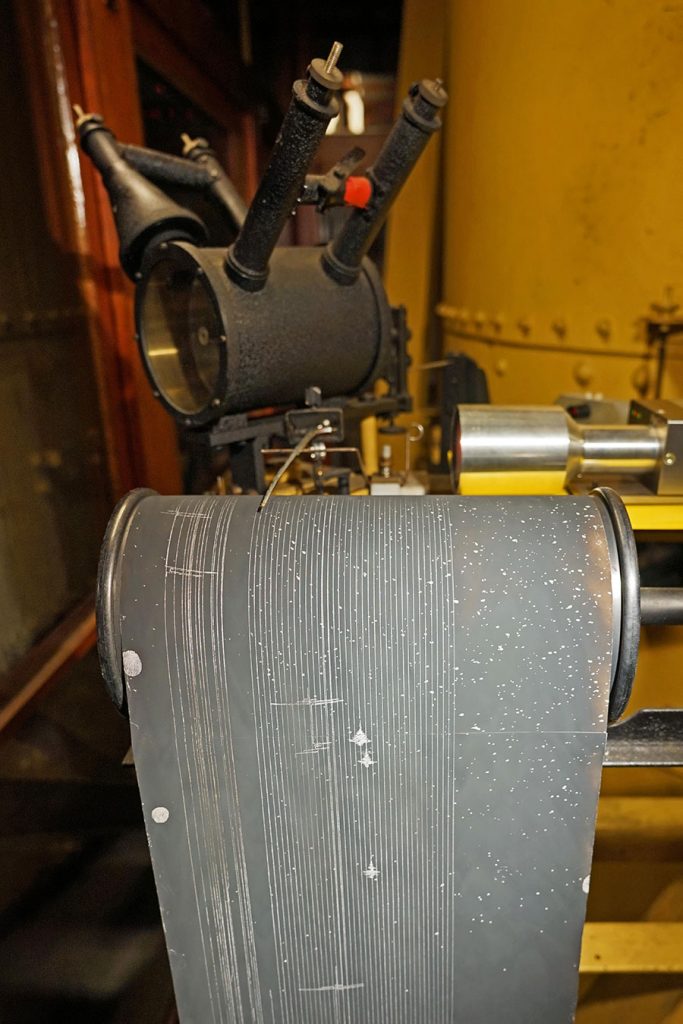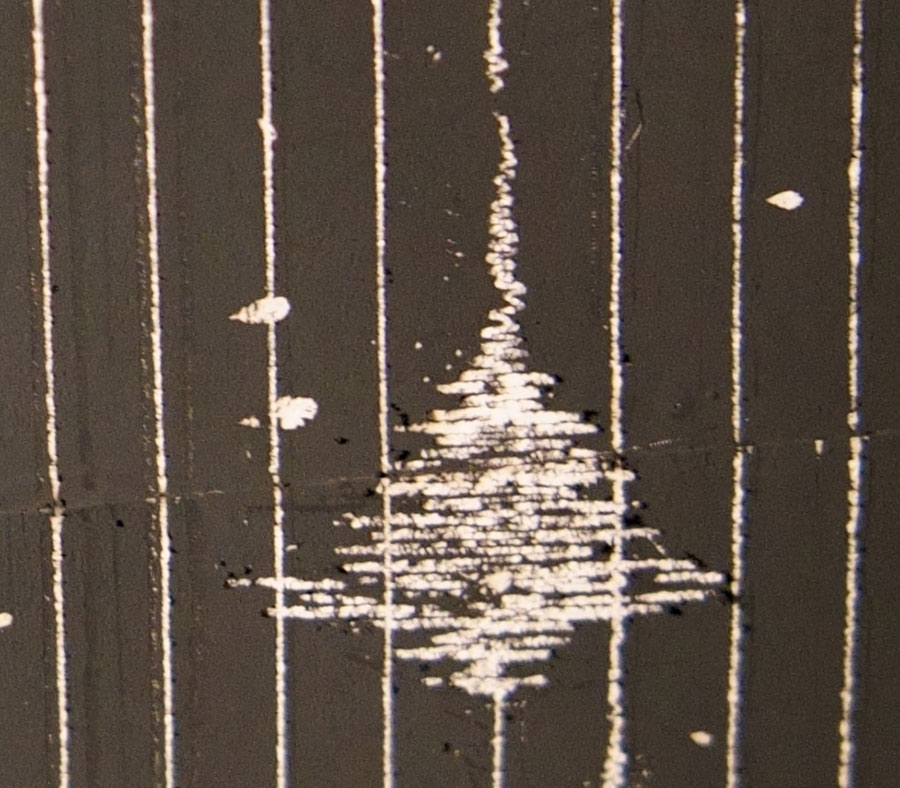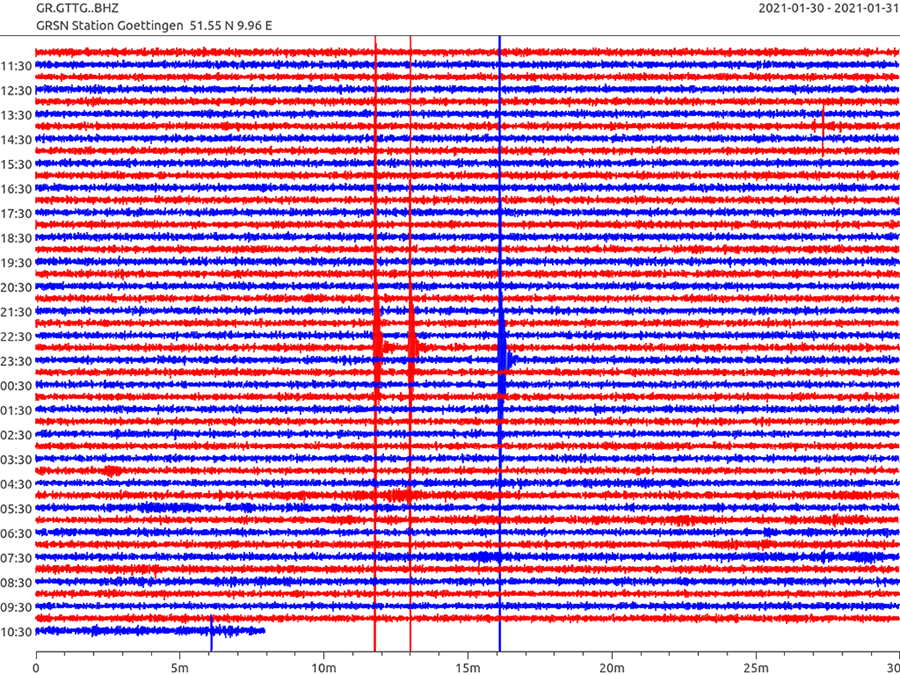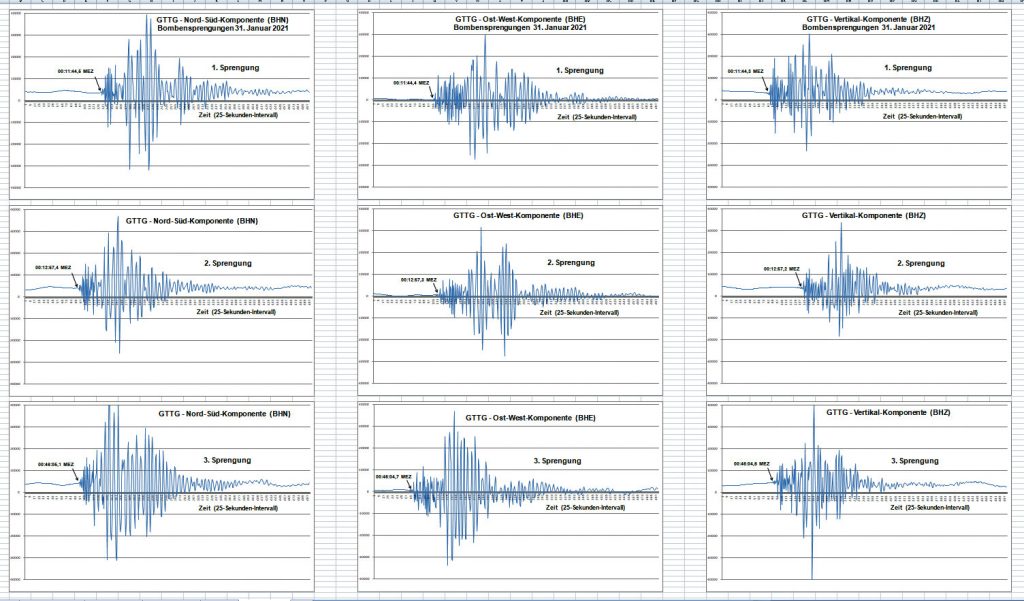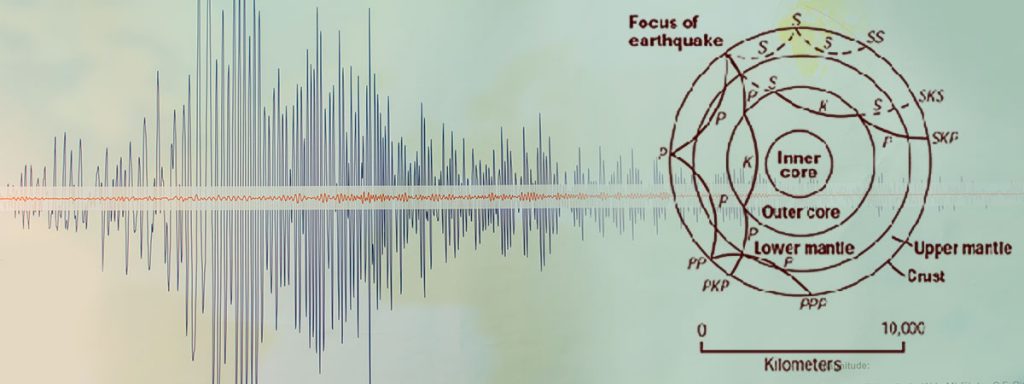
Current Earthquakes
what is happening with our earth?
About Earthquakes | Rescent Earthquakes
Bomb explosions in the night 30 / 31 January 2021 in Göttingen, registrations of the Wiechert’schen Erdbebenwarte Göttingen
Shortly after midnight, on January 31, 2021, four 10-ton bombs from World War 2 were detonated in the Göttingen city area near the Leine River, with two neighboring bombs detonating simultaneously. Thus, there were three events registered by the Göttingen seismic station 3.2 km away above Herzberger Landstraße at Warteberg.
Figure 1 shows the registration of the explosions with the historical 17t pendulum on sooted paper. This is the north-south component of Wiechert’s horizontal seismograph at the GTT station, which has been in continuous operation for over 110 years. The deflections of the recording needle are clearly visible as “3 small fir trees”.
Figure 2 shows one of the “fir trees” enlarged. It took only about 5 seconds to paint it on the sooty paper. The largest deflections were caused by ground motions of only a few micrometers amplitude.
Right next door in the New Earthquake House is a modern seismograph of type STS-2. This seismological station GTTG is part of the German regional network GRSN and is operated by the Federal Institute for Geosciences and Natural Resources in Hannover with the support of the association “Wiechert’sche Erdbebenwarte Göttingen e.V.”.
Figure 2 shows one of the “fir trees” enlarged. It took only about 5 seconds to paint it on the sooty paper. The largest deflections were caused by ground motions of only a few micrometers amplitude.
Right next door in the New Earthquake House is a modern seismograph of type STS-2. This seismological station GTTG is part of the German regional network GRSN and is operated by the Federal Institute for Geosciences and Natural Resources in Hannover with the support of the association “Wiechert’sche Erdbebenwarte Göttingen e.V.”.
Figure 4 shows the measurement data of the three components from the three blasts in high temporal resolution. The fastest waves, the so-called P-waves, passed through deeper soil layers at about 10 times the speed of sound and reached the earthquake control room after one second. From this, the three blast times on January 31 can be determined to the second: 00:11:43, 00:12:56, 00:46:04 CET.
Only 3 seconds after the blasts the first surface waves reached the earthquake control room. They have an oscillation period of about 0.4 seconds. The distance from one wave crest to the next is about 500 meters, and the wave crests at the earthquake station are only a few micrometers high.



